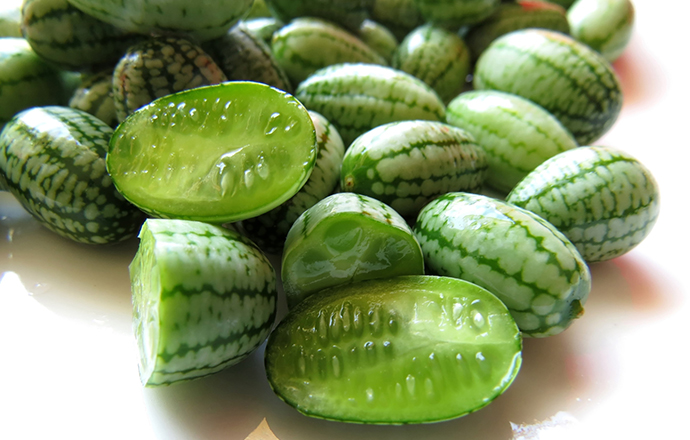
WHAT? Tangy, crunchy, and bite-sized—cucamelons are perfect in salads, sandwiches, and fruity salsas. Native to Mexico and Central America, Melothria scabra, or the cucamelon, is also called the mouse melon, Mexican sour gherkin, or “sandita,” meaning little watermelon. Originally part of the Aztec diet, cucamelons are now commonly served in Central America as a delicacy. These grape-sized fruits have crisp, white flesh with a refreshing and mildly sour cucumber taste. As a staple of Mexican cuisine for centuries, cucamelons have an abundance of uses and can be grown in the comfort of one’s own garden—we even grow them at the Beard House, thanks to Koppert Cress. Sow the seeds from April to May indoors, and when there is no chance of frost outside, plant them with a trellis and watch their delicate vines grow. While they are slow starters, cucamelons produce plentiful yields and require barely any upkeep. Although seeds aren't widely available, once your plant is grown, you can harvest the roots until next season comes around. For extra flavor and texture, add sliced raw cucamelons to a cherry tomato salad or bruschetta, sauté them as a side dish, or even pickle them with dill and mint for a sandwich topping or relish. Warning—these adorable fruits are highly addictive.
WHERE? Flavors of Oaxaca
HOW? Spiny Lobster Salad with White and Green Asparagus, Cucamelons, and White Peach Vinaigrette



-57 web.jpg)


